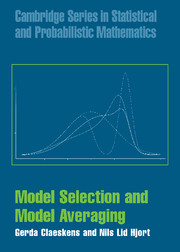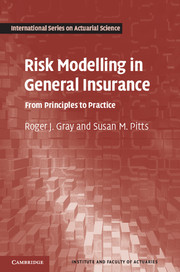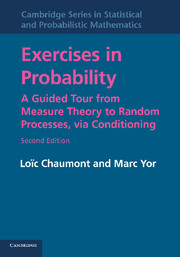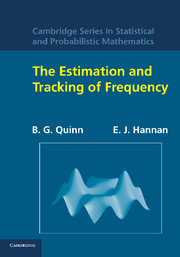Refine search
Actions for selected content:
2703 results in General statistics and probability

Model Selection and Model Averaging
-
- Published online:
- 05 September 2012
- Print publication:
- 28 July 2008

Risk Modelling in General Insurance
- From Principles to Practice
-
- Published online:
- 05 August 2012
- Print publication:
- 28 June 2012

Exercises in Probability
- A Guided Tour from Measure Theory to Random Processes, via Conditioning
-
- Published online:
- 05 August 2012
- Print publication:
- 19 July 2012

The Estimation and Tracking of Frequency
-
- Published online:
- 05 August 2012
- Print publication:
- 05 February 2001
Preface to the first edition
-
- Book:
- Exercises in Probability
- Published online:
- 05 August 2012
- Print publication:
- 19 July 2012, pp xvii-xviii
-
- Chapter
- Export citation
6 - Random processes
-
- Book:
- Exercises in Probability
- Published online:
- 05 August 2012
- Print publication:
- 19 July 2012, pp 191-228
-
- Chapter
- Export citation
Index
-
- Book:
- Exercises in Probability
- Published online:
- 05 August 2012
- Print publication:
- 19 July 2012, pp 278-279
-
- Chapter
- Export citation
3 - Gaussian variables
-
- Book:
- Exercises in Probability
- Published online:
- 05 August 2012
- Print publication:
- 19 July 2012, pp 75-88
-
- Chapter
- Export citation
Final suggestions: how to go further?
-
- Book:
- Exercises in Probability
- Published online:
- 05 August 2012
- Print publication:
- 19 July 2012, pp 269-269
-
- Chapter
- Export citation
Solutions for Chapter 5
-
- Book:
- Exercises in Probability
- Published online:
- 05 August 2012
- Print publication:
- 19 July 2012, pp 176-190
-
- Chapter
- Export citation
Solutions for Chapter 4
-
- Book:
- Exercises in Probability
- Published online:
- 05 August 2012
- Print publication:
- 19 July 2012, pp 132-162
-
- Chapter
- Export citation
Solutions for Chapter 3
-
- Book:
- Exercises in Probability
- Published online:
- 05 August 2012
- Print publication:
- 19 July 2012, pp 89-102
-
- Chapter
- Export citation
Some frequently used notations
-
- Book:
- Exercises in Probability
- Published online:
- 05 August 2012
- Print publication:
- 19 July 2012, pp xix-xx
-
- Chapter
- Export citation
1 - Measure theory and probability
-
- Book:
- Exercises in Probability
- Published online:
- 05 August 2012
- Print publication:
- 19 July 2012, pp 1-13
-
- Chapter
- Export citation
4 - Distributional computations
-
- Book:
- Exercises in Probability
- Published online:
- 05 August 2012
- Print publication:
- 19 July 2012, pp 103-131
-
- Chapter
- Export citation
Frontmatter
-
- Book:
- Exercises in Probability
- Published online:
- 05 August 2012
- Print publication:
- 19 July 2012, pp i-vi
-
- Chapter
- Export citation
Preface to the second edition
-
- Book:
- Exercises in Probability
- Published online:
- 05 August 2012
- Print publication:
- 19 July 2012, pp xv-xvi
-
- Chapter
- Export citation
Solutions for Chapter 1
-
- Book:
- Exercises in Probability
- Published online:
- 05 August 2012
- Print publication:
- 19 July 2012, pp 14-26
-
- Chapter
- Export citation
Where is the notion N discussed?
-
- Book:
- Exercises in Probability
- Published online:
- 05 August 2012
- Print publication:
- 19 July 2012, pp 268-268
-
- Chapter
- Export citation
Solutions for Chapter 2
-
- Book:
- Exercises in Probability
- Published online:
- 05 August 2012
- Print publication:
- 19 July 2012, pp 48-74
-
- Chapter
- Export citation
